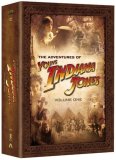| Reviews & Columns |
|
Reviews DVD TV on DVD Blu-ray 4K UHD International DVDs In Theaters Reviews by Studio Video Games Features Collector Series DVDs Easter Egg Database Interviews DVD Talk Radio Feature Articles Columns Anime Talk DVD Savant Horror DVDs The M.O.D. Squad Art House HD Talk Silent DVD
|
DVD Talk Forum |
|
|
| Resources |
|
DVD Price Search Customer Service #'s RCE Info Links |
|
Columns
|
|
|
Adventures of Young Indiana Jones - Volume One, The
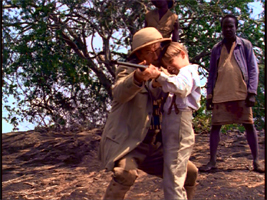 It was years ago when we first heard about a forthcoming DVD set for The Adventures of Young Indiana Jones. Originally the series was tentatively scheduled for either a 2005 or 2006 release but things being what they were, here we are in 2007. While most of the time was spent gathering bonus material and piecing the series together I do have to admit that it seems convenient that it coincides with press buzz surrounding Indiana Jones and the Kingdom of the Crystal Skull.
It was years ago when we first heard about a forthcoming DVD set for The Adventures of Young Indiana Jones. Originally the series was tentatively scheduled for either a 2005 or 2006 release but things being what they were, here we are in 2007. While most of the time was spent gathering bonus material and piecing the series together I do have to admit that it seems convenient that it coincides with press buzz surrounding Indiana Jones and the Kingdom of the Crystal Skull.
In case you missed the series and are only familiar with Harrison Ford's Indiana Jones then you're in for something of a treat. Did you ever wonder exactly how Indy became the brave adventurer he was? In The Last Crusade we were treated to a younger Indiana Jones and heard many amusing tales about the past from his father but there wasn't a wealth of information regarding his previous exploits. The Adventures of Young Indiana Jones sought to change all of that and to give us a look at his earlier years. However, rather than just focus on Indiana's growing pains each episode placed our protagonist in the midst of history. Watch a single episode and you'll see prominent characters and events of the time period. Sure it got to be a little ridiculous at times but the fact remained that the show educated kids while it entertained them; something that doesn't happen that often enough with television.
This series follows a young Indiana as he travels with his parents (as Jones' Sr. Lloyd Owen provided a nearly pitch perfect Sean Connery) and tutor as they visit locations around the world and cross paths with many historic figures. Now, when the series aired the focus shifted between the younger Indiana played by Carrier to the older one portrayed by Sean Patrick Flannery. The episode formula changed somewhat with the older Indiana and it allowed the writers to implement some mature facets into the program. This is especially true considering that Flannery's Jones was running around during the days leading up to the First World War.
With the mostly fantastic cast and premise the other pieces of Young Indiana Jones simply fell into place. With Lucas helming the production it looked fantastic with many authentic locations from around the world and mostly seamless special effects. The writing was generally a cut above as well, though in my opinion some episodes just dragged on with poor pacing. In practically every episode you could expect see some moral weaved into the plot as Indiana, and by association you the viewer, learned something about life, love, and the difference between right and wrong. Other cultures were put into perspective and while we would first view them from an American standpoint eventually Indiana would embrace the culture for what it was. The show carried a strong sense of purpose even though it could be a little heavy-handed at times.
Now, before you jump for joy and sing praises for George Lucas you should know that there are some changes afoot. The most jarring alteration from the original broadcast is that these episodes are not presented in their complete form. If you watched the show when it aired you probably remember some charming book-end sequences with an older Indiana Jones played by George Hall discussing the moral of the story. These have been omitted and the episodes no longer appear as they were originally intended (Hopefully the book-end with Harrison Ford will remain intact in a coming set). The fourteen episodes available here have been coupled up and turned into "films" which is how they appeared on VHS back in the day.
Each film, or pairing of episodes, clocks in at 90 minutes. In some cases these "movies" work very well with each other (some actually appearing in the order they aired) but if you're looking for continuity between the pair you're probably going to be left scratching your head in some cases. The goal here was to present them chronologically from the Indy timeline but it doesn't always work. For instance there are episodes where a young Indiana Jones played by Corey Carrier will be one age during the first leg of the journey and older in the second. Let's just say that you're going to be watching these episodes for their content and what the show was intended to be rather than the way these films were put together. Fortunately if you can manage to look past the sometimes flawed logic in terms of editing you're going to find a fantastic series that entertains as it educates.
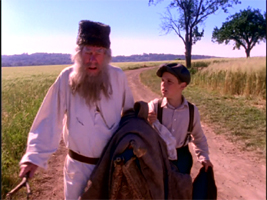 Many of the episodes were stand alones but there were a few two-parters thrown into the mix when it aired. These came with seamless transitions and they helped connect a younger Indiana's adventures to a slightly older one's. Take the pilot "Curse of the Jackal". When the storyline aired it began with young Indiana on an excursion to Egypt with his family. While there he met Howard Carter and T.E. Lawrence and joined them during their excavation of a sealed tomb. Eventually a game of murder was afoot and an artifact depicting a jackal was stolen in the midst of the confusion. The first part ended with Lawrence stating how the jackal was gone and they would probably never discover what happened. It wouldn't be until years later in Mexico that a teenage Indy revisited the mystery from his youth (presented in this set as part of the "Spring Break Adventure" film).
Many of the episodes were stand alones but there were a few two-parters thrown into the mix when it aired. These came with seamless transitions and they helped connect a younger Indiana's adventures to a slightly older one's. Take the pilot "Curse of the Jackal". When the storyline aired it began with young Indiana on an excursion to Egypt with his family. While there he met Howard Carter and T.E. Lawrence and joined them during their excavation of a sealed tomb. Eventually a game of murder was afoot and an artifact depicting a jackal was stolen in the midst of the confusion. The first part ended with Lawrence stating how the jackal was gone and they would probably never discover what happened. It wouldn't be until years later in Mexico that a teenage Indy revisited the mystery from his youth (presented in this set as part of the "Spring Break Adventure" film).
There is, however, a trend of strapping together two completely different storylines in the first set. For instance the second film, "Passion for Life" begins with a (once again) younger Indiana out on a safari in Kenya with his family. While there he befriends an African boy and meets President Theodore Roosevelt. He learns about hunting, life, and what it takes to live in the African wild. From Africa "Passion for Life" transitions to Paris where Indiana hangs out with a young Norman Rockwell and meets Degas and Picasso in the process.
The third film focuses strongly on one of young Indiana's first love interests and tosses some famous folks into the mix as they offer him relationship advice. "The Perils of Cupid" begins by taking Indy to Vienna in 1908 where he meets a young princess named Sophie. The two kind of hit it off though things are a little bumpy at first. It doesn't take too long for Indy to find help though as he bumps into Sigmund Freud, Carl Jung and Alfred Adler. I do have to say that the script handles our protagonist's confused feelings rather well and there are many tender moments in between; even some with Miss Seymour, his tutor.
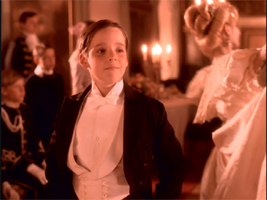 From Vienna the movie transitions somewhat flawlessly to Florence where Indy attends his first opera. Again the love theme is prevalent as Giacomo Puccini pursues Mrs. Jones while the Professor is lecturing in Rome. While Seymour and Indiana are doing their learning thing Anna and Puccini are canoodling in the off moments. Indy's mother was never a strong character in my opinion and while this storyline gave her some depth, it certainly didn't improve her image. In between all of the little bits Indiana begins to suspect something is going on and starts to quietly fear for the future.
From Vienna the movie transitions somewhat flawlessly to Florence where Indy attends his first opera. Again the love theme is prevalent as Giacomo Puccini pursues Mrs. Jones while the Professor is lecturing in Rome. While Seymour and Indiana are doing their learning thing Anna and Puccini are canoodling in the off moments. Indy's mother was never a strong character in my opinion and while this storyline gave her some depth, it certainly didn't improve her image. In between all of the little bits Indiana begins to suspect something is going on and starts to quietly fear for the future.
"Travels with Father" begins in Russia where Indiana runs through a wedding celebration like a bull in a China shop. Quite literally he destroys everything he touches from a rolling cart with serving dishes to the wedding cake itself. In a fit of rage his parents ground him and it leads to Indy running away and exploring the Russian countryside by himself. While on the lamb he bumps into Leo Tolstoy (Michael Gough) and has some run-ins with the Cossacks. There were a few slow parts to this episode but Carrier and Gough actually had some great chemistry that made things better. From here "Travels with Father" transitions to Athens quite perfectly with the trademark red line on the map to indicate that Indy was traveling. This is thanks to the fact that these episodes were actually part of the same original story arc. Nikos Kazantzakis pops in while Indiana and his father have some one on one time discussing philosophy and the meaning of life.
After the quality father and son time, The Adventures of Young Indiana Jones moves on to Benares where Indy teaches baseball to Jiddu Krishnamurti and attends an event with Annie Besant and Charles Leadbeater. Miss Seymour goes off on a little adventure of her own when her suspicions in Theosophy get the better of her. From there the Jones family takes a train out to China where Indiana falls ill and must be treated with Chinese medicine. These two episodes pair up well together and Indy even references to something Kirshnamurti said during their time together.
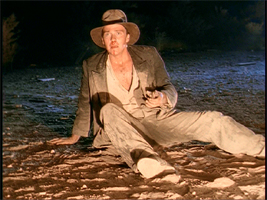 At this point in the release Carrier's Indiana days are over and it's time for Flannery's older Jones to take the center stage. This time the show springs ahead to Princeton 1916 as Indy is attempting to court Nancy Stratemeyer, whose father Edward penned Nancy Drew. In the second half of "Spring Break Adventure" we go all the way back to the first half episode on this set. The Jackal artifact storyline sees fruition and though it's odd to have the conclusion this far into the set it was nice to have closure. The final leg of this collection's journey takes us to Ireland and London where Indiana finds himself in the midst of war and talk of revolution.
At this point in the release Carrier's Indiana days are over and it's time for Flannery's older Jones to take the center stage. This time the show springs ahead to Princeton 1916 as Indy is attempting to court Nancy Stratemeyer, whose father Edward penned Nancy Drew. In the second half of "Spring Break Adventure" we go all the way back to the first half episode on this set. The Jackal artifact storyline sees fruition and though it's odd to have the conclusion this far into the set it was nice to have closure. The final leg of this collection's journey takes us to Ireland and London where Indiana finds himself in the midst of war and talk of revolution.
I loved this show when it aired and have to admit that I was very upset when it didn't come back for another season. While I may have something of a sour taste in my mouth due to the way these episodes were paired together I must say that the quality of the series persists. Some storylines are better than others and in my opinion the Flannery Indiana segments are way, way better than the Carrier ones.
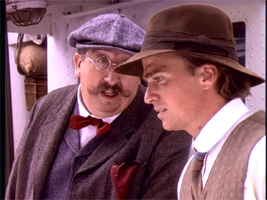 I'm not denouncing Carrier's Indiana Jones by any means, but after sitting through each of these episodes the quality was just better with Flannery's. With an older Jones the writers were able to pen in some of the action, charm, and elements that made the movie franchise so successful. Sure Flannery is no Harrison Ford but as a younger Indiana he doesn't have to be. It's the experiences that seasoned the character and whether he's visiting Ireland, Mexico, or London you get a definite impression of what's to come.
I'm not denouncing Carrier's Indiana Jones by any means, but after sitting through each of these episodes the quality was just better with Flannery's. With an older Jones the writers were able to pen in some of the action, charm, and elements that made the movie franchise so successful. Sure Flannery is no Harrison Ford but as a younger Indiana he doesn't have to be. It's the experiences that seasoned the character and whether he's visiting Ireland, Mexico, or London you get a definite impression of what's to come.
Now, whether or not these adventures are cannon to the Jones franchise remains to be debated. I must say that from what I recall the best of this program is yet to come and as Indy gets involved with the First World War the sets should become far more interesting. Whether you're a fan who watched the series religiously when it aired or you're a newcomer who only knows the Jones character from the movies this is a highly recommended show. Sure some disappointment sets in when you take into consideration that the episodes have been placed together as films but the quality in between overcomes that flaw.
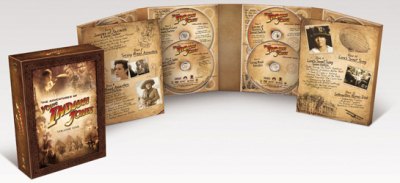
The first volume of The Adventures of Young Indiana Jones comes with packaging that attempts to recreate the look of the movie box set. Weathered artwork blankets the package though the outer box is flimsier and smaller than the one presented with the movies and there is no raised lettering to make the title stand out. Inside the set is a fold-out booklet that contains a whopping 12 DVDs. The seven Young Indiana films are spread out with a daunting amount of special features placed in between. Behind the discs and on the outside of the inner container are DVD notes and snippets from Indy's journal with photos and maps. It's a charming presentation sure to make fans happy.
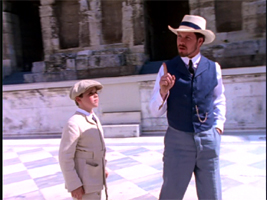 The Adventures of Young Indiana Jones comes to DVD with a full frame aspect ratio as one might expect considering the date of production. As you may or may not be aware Young Indiana Jones was shot using 16mm film rather than the standard 35mm in an effort to save on production costs. This allowed the creative team the chance to blow the budget on the fantastic locations and sets. So what does the lesser quality of 16mm mean for this DVD release? To be honest it barely comes into play.
The Adventures of Young Indiana Jones comes to DVD with a full frame aspect ratio as one might expect considering the date of production. As you may or may not be aware Young Indiana Jones was shot using 16mm film rather than the standard 35mm in an effort to save on production costs. This allowed the creative team the chance to blow the budget on the fantastic locations and sets. So what does the lesser quality of 16mm mean for this DVD release? To be honest it barely comes into play.
Considering this DVD release was in production for as long as it was I'm pleased to say that with regards to the video quality the Lucas standard is upheld. The image in Young Indiana has been cleaned up immensely and though it doesn't look pristine, it's safe to say that the series has never looked so good.
The palette appears flush and natural with a well-balanced contrast despite the fact that in some scenes there is a tendency for colors to bleed. Admittedly grain is dominant within the picture but it is far less than one might expect considering the age of the material. I have seen shows of this 15 year vintage blanketed with grain but with this series it's only a minor inconvenience. Sharpness within the image is generally maintained though you'll sometimes see it drop as scenes become terribly soft. Again, like the bleeding colors and abundant grain the softness doesn't entirely detract from the experience because you have to consider the source.
The production values of this set really brought Young Indiana up to speed with technology. I expected no less from a Lucas project and in many cases the brilliancy of the presentation gives the show a look that could easily compare to the Indiana films. Sure there is a little "give and take" when you're looking at the image quality but overall we couldn't have asked for more.
While the video presentation showcased a mastery of restoration to the original picture I have to say that the audio falls short on expectations. The Adventures of Young Indiana Jones hits DVD with a somewhat lackluster 2.0 English Dolby Digital soundtrack. Part of me was hoping for a 5.1 remix or some type of glorious enhancement given Lucas' track record so the simplistic offering here disappointed.
For what it is the audio is admittedly astute. Dialogue remains crisp and clear with a fine presence on the front channel. There is very little separation with this set up and sound effects comes across as flat on occasion. I suppose it was folly to expect something grandiose from a television show that aired during the early 90's but I can't help feel that the soundtrack could have had more vitality to it. The only available option as far as setting up your DVD experience is the ability to turn English subtitles on or off.
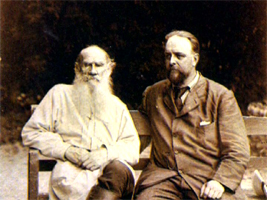 If I was forced to summarize the supplemental content for The Adventures of Young Indiana Jones' first DVD set with one word it would be "wow".
If I was forced to summarize the supplemental content for The Adventures of Young Indiana Jones' first DVD set with one word it would be "wow".
Seriously folks, this is the reason this collection took a little longer to release than planned. Out of the twelve discs available in this set eight of them have bonus material and in total you can expect to sit through 38 documentaries. In many ways you could look at this collection as two separate releases: one side The Adventures of Young Indiana Jones the other is a pile of historical features akin to what you could expect to see on the History Channel.
The first disc of this set has four documentaries with the first being about archaeology itself. "Archaeology: Unearthing Our Past" (19:17) is a great introductory piece to this DVD collection as it helps to recognize Jones' profession and how archaeologists actually work. It begins with some discussion about the job's past and moves onto the present. Commentators talk at length about some of the biggest discoveries that have been made and a narrator (Danny Shorago) provides some prevalent information as well.
The next documentary focuses on "Howard Carter and the Tomb of Tutankhamun" (22:33). It's fitting that this feature was included on the first disc with the "My First Adventure" episode in Egypt. You'll notice that trend throughout this series as each documentary is tied into the shows in some manner. As this documentary continues it stays focused on Carter's life and his discoveries. Once again commentators chime in and historical stock footage is spread throughout with some entertaining bits in between. Narrated by Penny Nelson the Howard Carter documentary is a very interesting look into the life of a man who was an archaeological legend.
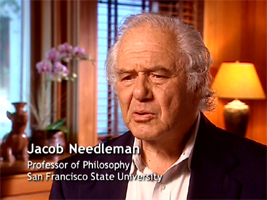 "Colonel Lawrence's War - T.E. Lawrence and Arabia" (36:05) takes a look at the life of Thomas Edward Lawrence. While most of history has romanticized Lawrence as a great warrior there is quite a large amount of myth surrounding the man. Experts chime in during this documentary to shed light on Lawrence's accomplishments as well as his downfalls. In the end they deconstruct his life and make him very human; a man that made many mistakes but was judged favorably.
"Colonel Lawrence's War - T.E. Lawrence and Arabia" (36:05) takes a look at the life of Thomas Edward Lawrence. While most of history has romanticized Lawrence as a great warrior there is quite a large amount of myth surrounding the man. Experts chime in during this documentary to shed light on Lawrence's accomplishments as well as his downfalls. In the end they deconstruct his life and make him very human; a man that made many mistakes but was judged favorably.
Keeping in step with the Tangiers leg of young Indy's journey is a documentary about slavery. "From Slavery to Freedom" (30:08) talks about the beginnings of slavery and its impact on human history right up to present day with the abolishment of slave trading around the world. Commentators remind us that there is still a black market of sorts out there that illegally handles the slave trade.
For the next round of special features we have to look all the way to the third disc in this boxed set. Six documentaries make their way onto this disc and like the previous ones they pertain to the episodes that reside on disc two, "Passion for Life". The first supplemental here is "Theodore Roosevelt and The American Century" (30:52). The documentary talks at length about Roosevelt's younger years and the zest for life he displayed throughout his presidency. With a supply of recordings, stock of photographs, and a wealth of information the feature goes on to showcase his ascension to power. From his early days prior to obtaining a governorship to falling into the presidency when McKinley was shot, many highlights of his life are put on display.
"Ecology - Pulse of the Planet" (24:12) is all about the world around us and our relationship with nature. Our impact on the globe does come into play as the narrator and experts discuss their beliefs on the destruction of the environment with pollutants. The documentary also spend a fair amount of time discussing our attempts to undo what we've done. From improving natural habitats and trying to bring species back from the brink of extinction this feature has a strong ecological focus. Personal accounts from people involved with restoration projects talk about their experiences and aspirations. This documentary had a little more character since it had more private accounts rather than historical facts.
"American Dreams - Norman Rockwell - The Saturday Evening Post" (24:17) brings the premise of the Young Indiana Jones documentaries back to persons of historical importance. In this instance Norman Rockwell takes the center stage with a gallery of his artwork and experts chiming in to discuss his personal life. A great deal of the feature takes a look at his work with The Saturday Evening Post and how his artwork impacted American society and culture. To this day his works are timeless and depict America the way it used to be with iconic imagery and a certain amount of charm.
Art remains the focus for the next three documentaries included on this disc. "Art Rebellion - The Making of the Modern" (26:07), "Edgar Degas - Reluctant Rebel" (22:53), and "Braque + Picasso - A Collaboration" all tied in extremely well to the second episode in "Passion for Life" (23:14). Each provides a wealth of information but while the Modern Art focus was interesting I found the focalized look at Degas and Picasso to be more riveting. Maybe it's because commentators were able to let their passion for artwork come through during their discussions or maybe it had something to do with my personal love of art. Whatever the case this paring of features was very entertaining and informative.
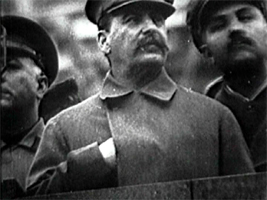 Skipping ahead to disc five we find the next batch of bonus content. "Giacomo Puccini - The Music of the Heart" (25:34) took a strong look at Puccini's muse and how his small collection of operas have remained in theaters throughout the years. It's a somewhat light look at the man's life but some of the finer points revolving around his history are put on display. Keeping up with the opera theme the next documentary "It's Opera!" (29:02) which, well, I think you can figure out what it's about. Expect to receive a lot of information about the history of opera, what inspires it, and what draws people to see it.
Skipping ahead to disc five we find the next batch of bonus content. "Giacomo Puccini - The Music of the Heart" (25:34) took a strong look at Puccini's muse and how his small collection of operas have remained in theaters throughout the years. It's a somewhat light look at the man's life but some of the finer points revolving around his history are put on display. Keeping up with the opera theme the next documentary "It's Opera!" (29:02) which, well, I think you can figure out what it's about. Expect to receive a lot of information about the history of opera, what inspires it, and what draws people to see it.
"The Archduke's Last Journey - End of an Era" (20:56) depicts Archduke Franz Ferdinand's assassination and how it affected the world. Not only did it feature this moment in history but it also discussed regional events of the time. From there the follow up documentary is "Powder Keg - Europe 1900-1914" (26:06) which discusses the years leading up to the 1st World War and the things that lead Europe to erupt such as it did. With so many years to cover and as many topics as there could be the information here is brief to be sure. The feature moves along at a decent clip and it covers most all of the major facts but it's one of the least focused documentaries that you'll find on this set.
Getting back to the focus on a historical personality are "Sigmund Freud - Exploring the Unconscious" (21:57) and "Carl Jung and the Journey of Self Discovery" (19:30). Sigmund Freud's feature is more about the man while Carl Jung's looks a bit more at psychology. It has many references to things in modern life and what makes all of us tick with a strong focus on individuality. Rounding out the documentaries that look at how our brain works is "Psychology - Charting the Human Mind" (26:33). Psychology is such a broad topic that 26 minutes hardly seems like enough devoted time but the presentation of this feature is digestible.
Disc six not only contains "Travels with Father" but four documentaries as well. The first follows Indy's exploits in Russia by focusing on Tolstoy. "Seeking Truth - Life of Leo Tolstoy" (31:15) tells the story of the man, his passions, and his writings. There is quite a lot of information available here from his early inspirations and days where the powers that be censored his work right up to his final moments. He led an interesting life and "War and Peace" remains every bit as prominent today as it did when it was originally published. Tolstoy wasn't the only Russian author though and "Unquiet Voices - Russian Writers and the State" (26:00) takes a look at the writers, their influence, and struggles.
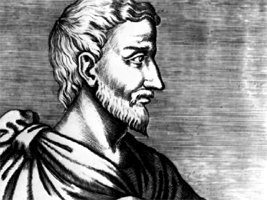 Considering the Athens segment of "Travels with Father" dealt a great deal with philosophy it seems only fitting that "Aristotle - Creating Foundations" (21:37) and "Ancient Questions - Philosophy and Our Search for Meaning" (23:52) make their way into the set. Both of these are similar to the psychology discussion from the previous disc's bonus content.
Considering the Athens segment of "Travels with Father" dealt a great deal with philosophy it seems only fitting that "Aristotle - Creating Foundations" (21:37) and "Ancient Questions - Philosophy and Our Search for Meaning" (23:52) make their way into the set. Both of these are similar to the psychology discussion from the previous disc's bonus content.
The seventh disc in this set focuses on personalities and events from the happenings in "Journey of Radiance". The first two documentaries here are "Jiddu Krishnamuti - The Reluctant Messiah" (26:50) and "Annie Besant - An Unlikely Rebel" (26:56). Admittedly I knew little about this particular part of history beyond the basics. These focalized features really shed light on both figures with a bit of Charles Leadbeater thrown in for good measure.
"Medicine in the Middle Kingdom" (26:49) and "Eastern Spirituality - The Road to Enlightenment" (29:06) bring us to China's past. The first documentary involving Chinese medicine was definitely interesting with a strong focus on acupuncture's history in the world. The feature also goes on to discuss herbal remedies at length and offers some commentators who have had medicine impact their lives. "The Road to Enlightenment" takes a look at many religions from around the world with a stronger focus on eastern practices.
Skipping ahead to disc nine reveals the bonus material for "Spring Break Adventure". Things begin with "Thomas Edison - Lighting Up the World" (26:53). The feature starts out with a brief introduction to his earlier days and goes on to talk about his many inventions; the light bulb in particular. Needless to say we would not be where we are today if it wasn't for Edison's genius and it's impressive to know that he still holds the record for American patents. Following the lines of the Edison documentary was another entitled "Invention and Innovation - What's Behind a Good Idea?" (22:55). Like the other ones this broader topic looks at invention as a whole rather than a particular aspect of it. Keeping in line with the "Princeton" episode of Young Indy "The Mystery of Edward Stratemeyer" (26:15) discusses the author of the Hardy Boys and Nancy Drew.
Following into the second half of "Spring Break" were three more documentaries that had to do with the Mexico episode. "Wanted: Dead or Alive - Pancho Villa and the American Invasion of Mexico" (28:10), "General John J. Pershing and His American Army" (28:26), and "George S. Patton - American Achilles" (29:35) each followed in step with the ones that came before them. They are informative from a historical standpoint and add value to this collection.
Disc eleven houses seven bonus documentaries for "Love's Sweet Song". Dealing with Ireland are "Easter Rising - The Poets' Rebellion" (25:54), "The Passions of William Butler Yeats" (27:43), "Sean O'Casey vs. Ireland" (25:18), and "Ireland - The Power of the Poets" (26:53). With regards to the Poet features the "Rebellion" one looks at Irish society in the early 1900's while the second "Power" takes a more recent spin with discussion of events from the past couple of decades. The final three documentaries on this set are "Winston Churchill - The Lion's Roar" (33:48), "Demanding the Vote - The Pankhursts and British Suffrage" (27:07), and "Fighting for the Vote - Women's Suffrage in America" (31:29). Each of these was interesting in its own right though I felt the pair of Vote episodes were the most compelling.
The final disc of this collection offers some DVD-ROM interactive material that doesn't provide information or much in the way of entertainment. Basically you just point and click at stuff and there is a game for the kiddies should they desire to play around with it. It's also worth noting that I had a very difficult time getting this disc to play in my computer and couldn't get it to work.
So there you have the overwhelming list of bonus content that is available on this collection. Seriously folks, if you're coming to Young Indiana Jones for the show that's fine and dandy but it's the supplemental material that truly give worth to the higher than expected MSRP. These 38 documentaries clock in at over 17 hours while the feature itself is just shy of the 11 hour mark. I do have to say that while I was blown away with the extra content, the lack of a documentary or behind the scenes look at the show itself was a huge source of disappointment. I appreciate the amount of effort driven towards the production of these historical inclusions but was it really so far off the map to toss in a bone about the show itself? After all, it's the main reason to purchase the DVD set! Hopefully the coming volumes will satisfy that craving.
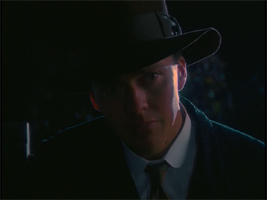
The Adventures of Young Indiana Jones was an ambitious program and one that proved to be something special. This first volume does a great job of bringing the sense of wonder and the endearing qualities of Indiana Jones to DVD. Sure the show may not be presented in the way that it aired and because of that some of the episodes become unbalanced (the younger Indy episodes in particular), but despite that this set revitalizes the series and makes it accessible to a new generation of Jones fans. The quality of the writing, acting, and production shine through here and though the audio is a source of disappointment, the video wears its restoration like a badge of honor.
Not only is the program exceedingly entertaining but the wealth of historical documentaries shatters the preconception of what bonus material should be. The 38 features tie their content in with the episodes they are coupled with but they take on a life of their own. Truly, the extra material here could have been a separate show all its own. If you have an interest in history or have children you want to educate the content her is mostly equivalent to what you'd find on the History Channel. Some of the documentaries are better than others but on the whole they are decidedly worthwhile. Once again I must admit to some feelings of disappointment because there are no special features that pertain to the series itself. Why are there no interview segments, commentaries, or making of featurettes? I appreciate the time devoted to the creation of the available documentaries but I came to this set for the series, not the historical aspect.
Despite these nitpicky flaws The Adventures of Young Indiana Jones was immensely entertaining and something to be cherished. I had a great time watching these episodes again and the documentaries were a cut above in terms of production value. It's not a perfect or comprehensive release but it's still a well-crafted collection that offers enough value to warrant a very high recommendation.
Check out more of my reviews here. Head on over to my anime blog as well for random musings and reviews of anime, manga, and stuff from Japan!
|
| Popular Reviews |
| Sponsored Links |
|
|
| Sponsored Links |
|
|
| Release List | Reviews | Shop | Newsletter | Forum | DVD Giveaways | Blu-Ray | Advertise |
|
Copyright 2024 DVDTalk.com All Rights Reserved. Legal Info, Privacy Policy, Terms of Use,
Manage Preferences,
Your Privacy Choices | |||||||









